Best PowerShell Script Tools to Buy in December 2025
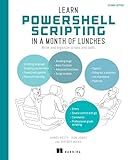
Learn PowerShell Scripting in a Month of Lunches, Second Edition: Write and organize scripts and tools


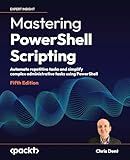
Mastering PowerShell Scripting: Automate repetitive tasks and simplify complex administrative tasks using PowerShell


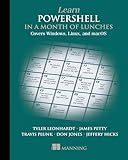
Learn PowerShell in a Month of Lunches, Fourth Edition: Covers Windows, Linux, and macOS


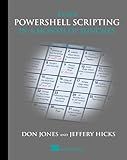
Learn PowerShell Scripting in a Month of Lunches


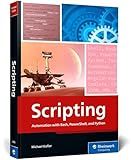
Scripting: Automation with Bash, PowerShell, and Python—Automate Everyday IT Tasks from Backups to Web Scraping in Just a Few Lines of Code (Rheinwerk Computing)


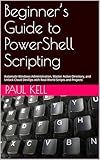
Beginner’s Guide to PowerShell Scripting: Automate Windows Administration, Master Active Directory, and Unlock Cloud DevOps with Real-World Scripts and Projects



PowerShell for Sysadmins: Workflow Automation Made Easy


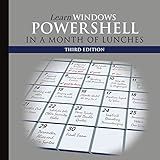
Learn Windows PowerShell in a Month of Lunches


To iterate through a CSV file using PowerShell, you can use the Import-Csv cmdlet to read the contents of the file and then loop through each row in the CSV data. Here is an example of how you can achieve this:
- Use the Import-Csv cmdlet to read the CSV file and store it in a variable:
$csvData = Import-Csv -Path "C:\path\to\file.csv"
- Iterate through each row in the CSV data using a foreach loop:
foreach ($row in $csvData) { # Access data in each column of the row using column headers $column1Value = $row.Column1 $column2Value = $row.Column2
# Perform operations on the data
Write-Host "Row data: $column1Value, $column2Value"
}
By using the Import-Csv cmdlet and a foreach loop, you can easily iterate through a CSV file in PowerShell and perform operations on the data within the file.
How to merge multiple csv files in Powershell?
To merge multiple CSV files in PowerShell, you can use the following steps:
- Create an array of the CSV files you want to merge:
$files = @("file1.csv", "file2.csv", "file3.csv")
- Use the Import-Csv cmdlet to import each CSV file into a separate variable:
$data = @() foreach ($file in $files) { $data += Import-Csv $file }
- Combine the data from all the CSV files into a single variable:
$mergedData = $data | ConvertTo-Csv -NoTypeInformation
- Export the merged data to a new CSV file:
$mergedData | Set-Content "mergedFile.csv"
This will merge the data from all the CSV files into a single CSV file called "mergedFile.csv".
What are the different cmdlets available for working with csv files in Powershell?
- Import-CSV: This cmdlet is used to import data from a CSV file into a PowerShell object.
- Export-CSV: This cmdlet is used to export PowerShell objects to a CSV file.
- ConvertTo-CSV: This cmdlet is used to convert PowerShell objects into CSV format.
- ConvertFrom-CSV: This cmdlet is used to convert CSV-formatted data into PowerShell objects.
- Select-Object: This cmdlet is used to select specific properties from CSV data.
- Where-Object: This cmdlet is used to filter CSV data based on specified criteria.
- Sort-Object: This cmdlet is used to sort CSV data based on specified properties.
- Group-Object: This cmdlet is used to group CSV data based on specified properties.
- Measure-Object: This cmdlet is used to calculate statistics on CSV data, such as count, sum, average, etc.
- Compare-Object: This cmdlet is used to compare two sets of CSV data and identify differences.
How to open a csv file using Powershell?
You can open a CSV file using PowerShell by using the Import-Csv cmdlet. Here's an example of how you can open a CSV file named "data.csv":
# Specify the path to the CSV file $csvFile = "C:\path\to\data.csv"
Use Import-Csv cmdlet to read the contents of the CSV file
$data = Import-Csv $csvFile
Display the data from the CSV file
$data
Simply replace "C:\path\to\data.csv" with the actual path to your CSV file. This code will read the contents of the CSV file into a PowerShell variable named $data and then display the data in the console.
How to group data in a csv file using Powershell?
To group data in a CSV file using Powershell, you can use the Group-Object cmdlet along with the Import-Csv cmdlet to read the CSV file and group the data based on a specific property.
Here's an example:
- Import the CSV file:
$data = Import-Csv -Path "C:\path\to\your\file.csv"
- Group the data based on a specific property:
$groupedData = $data | Group-Object -Property "PropertyToGroupBy"
- Iterate through the grouped data and output the results:
foreach ($group in $groupedData) { Write-Host "Group: $($group.Name)"
foreach ($item in $group.Group) {
Write-Host "Item: $($item.Property1), $($item.Property2), $($item.Property3)"
}
}
Replace "PropertyToGroupBy" with the actual property in your CSV file that you want to group by. The above example will group the data based on that property and output each group along with the individual items in that group.
You can save this script in a .ps1 file and run it in Powershell to group data in a CSV file.
How to count the number of rows in a csv file using Powershell?
You can count the number of rows in a CSV file using PowerShell by following these steps:
- Open PowerShell by searching for it in the start menu and clicking on it.
- Use the following command to import the CSV file into a variable:
$data = Import-Csv -Path "C:\path\to\your\file.csv"
Replace "C:\path\to\your\file.csv" with the actual path to your CSV file.
- Use the following command to count the number of rows in the CSV file:
$count = ($data | Measure-Object).Count
- Finally, you can print the count of rows using the following command:
Write-Host "Number of rows in the CSV file: $count"
This will display the number of rows in the CSV file in the PowerShell console.
What is the best practice for iterating through large csv files in Powershell?
When iterating through large CSV files in PowerShell, it is best to use the Import-Csv cmdlet along with the pipeline to process the data in chunks. This allows for efficient memory usage and faster processing times. Additionally, it is recommended to use the Select-Object cmdlet to only select the columns that are needed for processing, rather than loading all columns into memory. Another best practice is to use the foreach loop to iterate through each row of the CSV file instead of loading the entire file into memory at once. Lastly, consider using the -ReadCount parameter with Import-Csv to specify the number of rows to read at a time, which can help optimize performance for large files.
